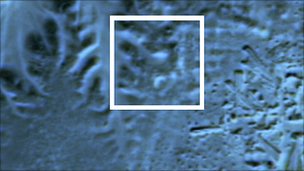The processing of infrared images revealed another 17 pyramids in Egypt

Seventeen new pyramids were discovered underground by analyzing satellite photographs in the infrared spectrum. The pictures even show the layout of ancient Egyptian cities and all the buildings. Among them, more than 1,000 tombs and 3,000 residential quarters have already been recognized.
Unfortunately, the BBC article did not specifically state which technology was used to “scan” the archaeological layers and detect seals at a depth of several meters. It can be assumed that this is infrared spectroscopy , which is already used in archeology. Infrared spectroscopy studies the absorption and reflection spectra in the wavelength range from 10 -6 to 10 -3 m. Theoretically, an IR filter can be put on the satellite and you can take photos or even install a spectrophotometer, but what will it give us?
If you think about it, you can take pictures in the IR spectrum day and night, calculate the difference and thus reveal sand that heats up more slowly than others. After all, the sand over massive stone structures should release heat faster and heat up more slowly.
 Of course, an archaeologist should work here, who is able to distinguish an artificial construction (like the pyramid in the photo on the right) from the usual breed.
Of course, an archaeologist should work here, who is able to distinguish an artificial construction (like the pyramid in the photo on the right) from the usual breed.')
Whatever the method used, it is effective in Egyptian sands, as demonstrated by the author of the study, the American Egyptologist Dr. Sarah Parcak. It is difficult to say whether the similar equipment will work when infrared shooting more dense Russian soils, under which ancient artifacts also probably remained.
Source: https://habr.com/ru/post/119980/
All Articles